A powerful civilization once thrived in Ichma before it was conquered by the Spanish in 1535.
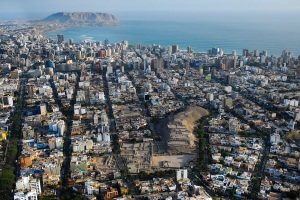
Lima, Peru
A low mantle of grey cloud hovered above the valley that was once home to the great Incan empire as the Crystal Symphony slid into her berth at Callao, the small port that serves the capital of Peru.
Long before the first Europeans arrived in the Americas, a vast and powerful civilization thrived here that stretched across the continent from Colombia in the north to Argentina and Chile in the south. The Incas called it Tahuantinsuyu (or the Kingdom of the Four Regions of the Universe), and its capital was Ichma or what we know today as Lima, Peru.
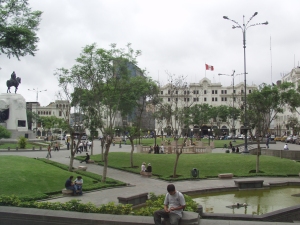
Plaza San Martin, Lima
Ichma was eventually taken by Spaniard Francisco Pizaro who renamed the city Ciudad de los Reyes (City of Kings) to commemorate the date of his conquest (January 16, 1535 which also happened to be the day of the Christian Epiphany). However, over time the city became known as Lima, which is believed to have come from the native Indian word “limaq” once used to describe a famous oracle in the nearby Rimac Valley.
Under Spanish rule, Lima evolved into a regal metropolis that dominated political and commercial life in South America for the next 300 years. It was considered the most beautiful colonial settlement on the continent, and enjoyed great wealth thanks to its monopoly on the overland trade route to the Atlantic. However, earthquakes eventually destroyed many of Lima’s landmark buildings, although some were rebuilt in the 18th and 19th centuries.
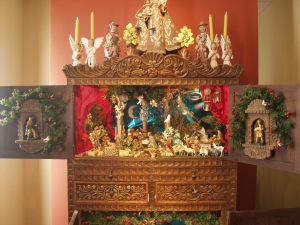
Casa Luna Museum
Unfortunately, Lima today is a rather chaotic city that some tourists avoid on their way to more appealing destinations like Machu Picchu in the Andes and the Huascaran National Park in the North Central Highlands. That’s a shame because there is still a lot to see in Peru’s capital, including some of the region’s best museums and some great examples of Spanish Colonial architecture in the city’s old historic centre.
In order to see as much as we could in one day, we opted for an organized city tour which included a tour of Lima’s colonial quarter, the Plaza San Martin and several museums including Peru’s National Museum of Archeology, Anthropology and History, the Casa Luna collection of nativity scenes, and the amazing Enrico Poli Museum.
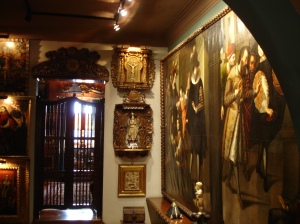
Enrico Poli Museum
An Italian who relocated to Peru in the 1950, Mr. Poli has dedicated most of his adult life to collecting archaeological objects from all over Peru and has one of the most exquisite private collections in the country. The museum is housed inside his own villa located on a quiet, unassuming street in Lima, which belies the astonishing richness and size of the collection.
The Poli Collection contains some of the best examples of the Inca and other pre-Hispanic cultures, as well as examples of colonial art. In fact, among the many private collections of pre-Columbian art in Peru, Enrico Poli’s is considered the finest, once hailed by National Geographic as one of the worlds “25 great adventures.” The museum is crammed with paintings, Colonial silver, furniture, pottery, weavings and a variety of artifacts from as recent as the 1800s to as far back as 2000 BC. One of the many treats of this museum is that the guided tour is usually conducted by Mr. Poli or his son Enrico Jr. whose knowledge and love of the collection shines through in their passionate descriptions.
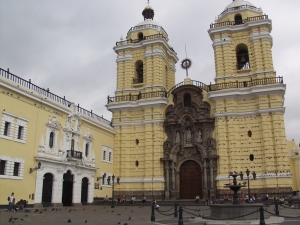
Covento San Francisco
After visiting the museums, we stopped near the Plaza Mayor in Central Lima for a wonderful lunch of artichoke mousse, sweet potatoes and braised beef in a colonial-style mansion called the Casa Aliaga. Then we walked down to Plaza Mayor where we found Lima’s baroque 18th-century La Catedral, the Palacio del Gobierno (Presidential Palace) and the Palacio Episcopal (Archbishop’s Palace) with its classical ornate wooden balconies which are typical for buildings from the colonial period.
We eventually arrived at the Covento y Museo de San Francisco, which is one of the most beautiful colonial-era churches to survive the great earthquake of 1746. The exterior features a grey baroque-style entrance between twin yellow spires, and a cloister with walls that are lined with spectacular glazed ceramic tiles from Seville

Ornate balcony in Lima
and hand-carved Moorish-style wooden ceilings.
As we left the church to board our bus for the return trip to the port of Callao, I was reminded of what author John Gunther once said about this grand city and its importance to South America over the centuries.
“It still has overtones of an imperial metropolis, and it still utterly dominates Peru, so much so that it is sometimes ironically called ‘a city searching for a country’.”
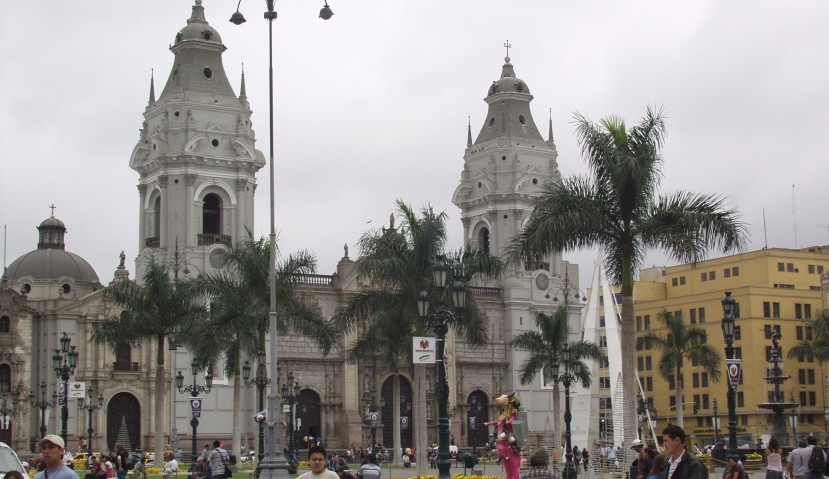
Featured image – Lima Cathedral
Categories: Travel

Beautiful!!!!
Sabrina – http://OrganicIsBeautiful.com
LikeLike